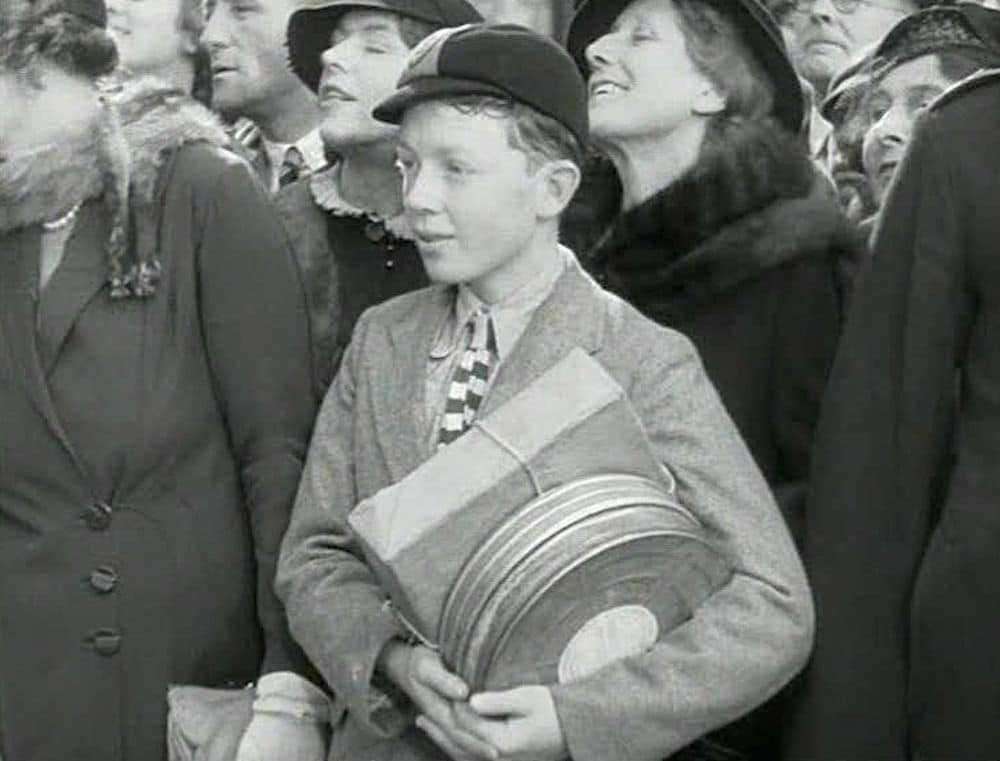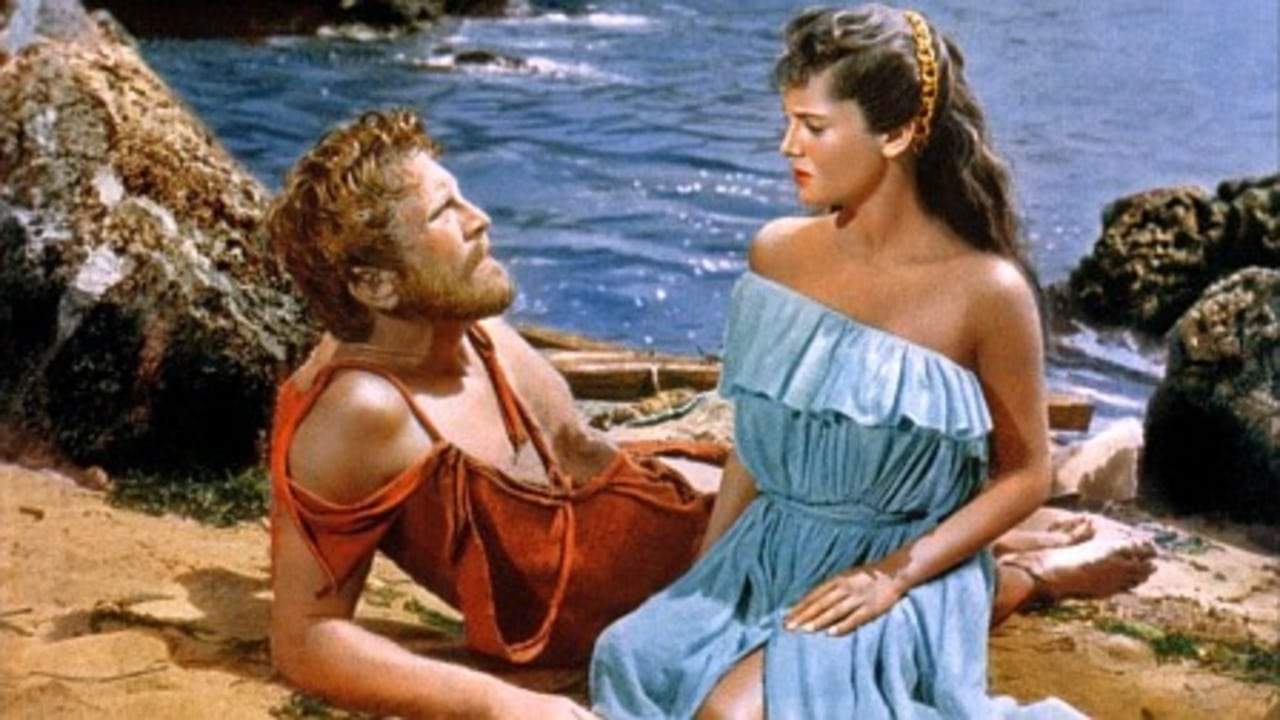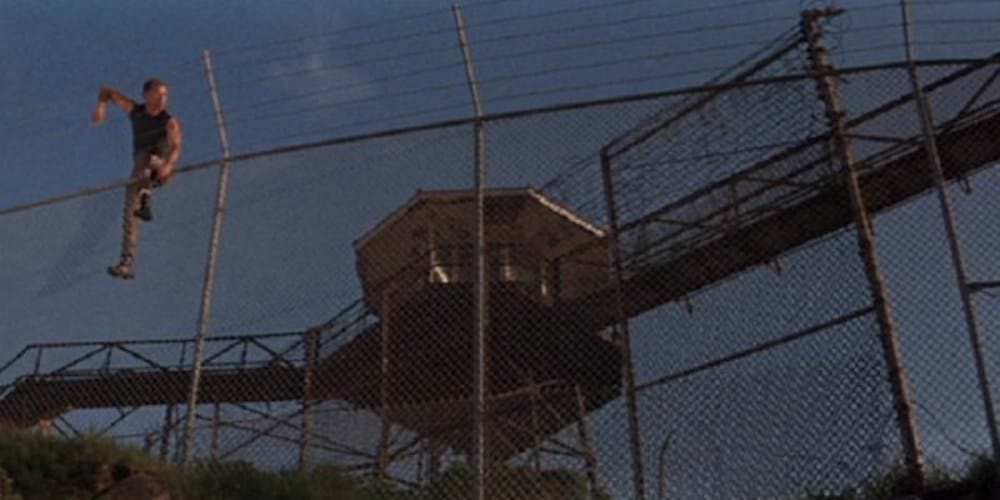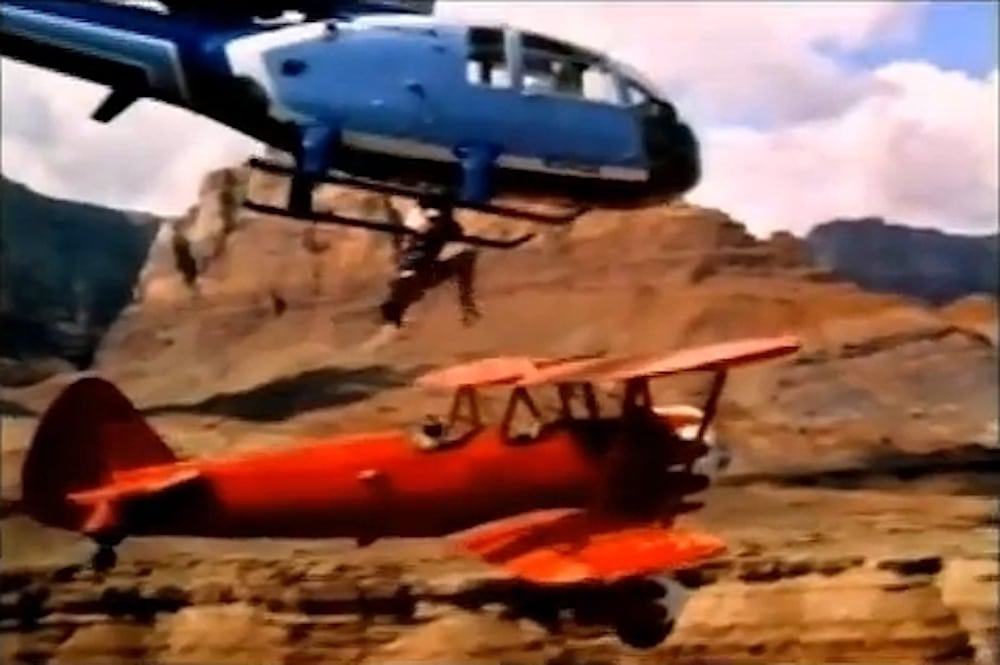We recommend eight movies to watch after you see the sixth installment of the ‘Mission: Impossible’ franchise.
The Mission: Impossible movies aren’t the most original. They’re based on an old TV series, and they tend to respect and reference old films. Of course, we can’t find anything else like them now or ever thanks to their incredible stunts, which offer history their own iconography. They’re a perfect mix of the cinematic past and present.
With Mission: Impossible – Fallout, Christopher McQuarrie returns to the helm. He’s again inspired by classic movies, even if he again doesn’t admit or realize all his influences. As with his Mission: Impossible – Rogue Nation, there’s a little James Bond, a little Hitchcock, and a little Christopher Nolan, particularly The Dark Knight (watch this brief side-by-side comparison video and read this column).
Many critics have also likened Fallout to Mad Max: Fury Road. For this week’s Movies to Watch After…, I’ve gone rogue with my recommendations, save for the one acknowledged title from McQuarrie. I probably missed some more direct homages while focusing on fearing for Tom Cruise’s safety, but these are films I thought of while watching the sequel:
Three Ages (1923)

By performing his own death-defying stunts, Tom Cruise has become the closest thing we have today to Buster Keaton. Only he’s not doing it for a laugh so much. Keaton was an action star second to being a silent comedy icon, and his movies have been a huge influence on many blockbusters that have come in the century since his start on the big screen.
One of his earliest famous action stunts wasn’t necessarily an inspiration for Cruise in Fallout but does have an interesting link. Just as Cruise notoriously broke his ankle jumping from one London building to another (and it’s in the movie), Keaton failed to perfectly land his own building-to-building jump in Three Ages, and that too can be seen on screen. He even planned extra stunt gags to go with the erroneous fall — once he returned from a three-day recovery.
Three Ages may not be one of Keaton’s most cherished works, but it is otherwise notable for being Keaton’s first feature as a filmmaker and star. And if you’ve ever seen D.W. Griffith’s atoning epic Intolerance, you’ll get a kick out of this movie sort of spoofing that film, as it’s divided into three ages of history, placing Keaton in caveman times, Ancient Rome, and the Roaring Twenties. The infamous stunt can be found in the last segment.
Sabotage (1936)

You can’t have a Mission: Impossible movie without at least one nod to Alfred Hitchcock, or at least one film to recommend of his that ties to the latest installment. Previously, we’ve seen the M:I franchise, in order, remind us specifically of Strangers on a Train, Notorious, The 39 Steps, North by Northwest, and The Man Who Knew Too Much. This time, it’s Sabotage.
Really, I again first thought of North by Northwest, which just tends to be on my mind a lot while watching today’s action movies, since it remains one of my favorite pioneers of the kind of tentpoles we see so regularly now. The fight on the cliff at the end of Fallout recalls, for me (as any cliff fight does), the Mount Rushmore sequence in the 1959 thriller.
But as the fight combines with the countdown clocks and another simultaneous fight sequence, with the threat of a nuclear explosion keeping us on the edge of our seats, the best Hitchcock connection is Sabotage with its memorable bus bomb scene that has become a landmark in cinema as evidence of Hitchcock being the master of suspense. The movie’s plot also concerns international terrorists whose bombing plot has to be thwarted in the nick of time.
Ulysses (1954)

There may be little-intended significance for the appearance of Homer’s epic “Odyssey” in Fallout. Besides its literal use as a prop book inside which to hold Ethan Hunt’s latest self-destructible communication from his boss, that is. But that doesn’t mean we critics won’t be reading more into the specificity of the chosen text. Slate’s Keith Uhlich, for instance, wrote:
“‘No man aforetime was more blessed, nor shall ever be hereafter’ is how Odysseus, the wandering protagonist of that ancient Greek epic, describes Achilles, confined to the underworld after his fateful demise by arrow on the Trojan battlefield. ‘Fallout’ follows through on at least the first part of Odysseus’s sentiment, missing no opportunity to prop up Cruise’s indomitable earthly ego while his character runs, jumps, falls, fist-fights, sky-dives, and clambers up rope and cliff in service of…what exactly?”
And An-Hanahar’s Alan Mehanna details, in his review, the correspondence of characters (Sloan = Calypso, Walker = the Cyclops, Julia = the Sirens, and Solomon Lane = Charybdis). I like this analysis except for the Julia part. Maybe Ilsa is the Sirens, but regardless Julia is definitely Penelope, the wife of Odysseus who thinks her man is lost at sea forever and is being pursued by potential replacements. Hunt may not be trying to find his way home to Julia, but that is where he lands in the last act of Fallout, and she not only has a suitor but a new beau.
Surprisingly, Hollywood hasn’t tried to make a big-budget effects-driven blockbuster out of the “Odyssey,” not even after the worldwide success of the “Illiad”-based Troy. There are cheap and forgettable adaptations and there are influenced works, such as O Brother, Where Art Thou?, but Paramount’s 1954 Ulysses starring Kirk Douglas is the best and most accessible and most faithful effort for now. And it’s not bad at all in being such.
Point Blank (1967)

While McQuarrie had some clear specific influences in mind while making Rogue Nation, there was only one movie he could name as an inspiration for part of Fallout: Point Blank. He told Fandango’s Erik Davis in a video interview:
“The biggest thing was to not pursue so much specific inspirations. Rogue Nation I had very specific inspirations that I was tapping into and that I was liberally referencing. Inside jokes and Easter eggs. And in this movie Rob Hardy and I didn’t do that so much. Rob is a big lover of John Carpenter’s ‘The Thing,’ and ‘Point Blank’ was a movie that he showed me. John Boorman’s ‘Point Blank’ is a movie that he came to me with early on. And I made one little reference to ‘Point Blank’ as kind of a wink to Rob.
“But everything else was we discovered after the fact. We went back, there’s the fight scene, the gunfight that happens in London. When we started looking at the dailies, we were like, my god, this looks like Alcatraz in ‘Point Blank.’ But we weren’t specifically reaching for that when we did it. It was more of an inspiration than an influence. Or an influence than an inspiration.”
So what was the intended reference? McQuarrie is probably talking about Henry Cavill’s character being named August Walker, which could be a nod to Lee Marvin’s main character, Walker, in Point Blank. The Alcatraz part is the opening of the movie where Walker is double-crossed and left for dead by his partner in a courier robbery. The rest of the movie is his attempt to track down the guy and recover his share, eventually from other bigger bads. Wouldn’t it be more apt for Cavill’s character to be named Reese after the deceiver, though?
Deadly Encounter (1982)

The early ’80s were big for helicopter fans. In 1983, Blue Thunder was a critical and box office success (especially with all our dads). That was followed by the hit syndicated TV series Airwolf (which proved more popular than the Blue Thunder spin-off show). But ask most helicopter junkies and they’ll name a TV movie as the best helicopter action movie of that time. Originally aired on CBS, Deadly Encounter obviously cost much less than something like a Mission: Impossible movie, yet its helicopter stunts might still remain the fans’ favorite.
Deadly Encounter stars Larry Hagman as a pilot attempting to save his ex-girlfriend from mobsters, and much of the movie involves him flying a Hughes 500C in pursuit of or pursued by the bad guys. There are low-flying stunts, dogfights, loops, and a climactic bit where Hagman’s character transfers from the side of a biplane to an SA-341 Gazelle’s landing gear in midair. He then fights a guy on the side of the helicopter and climbs in to take over in the cockpit once he’s tossed the mobster and then pilot to their deaths.
The action sequences aren’t directed quite as well as Fallout‘s thrilling helicopter maneuvers and chase, but helmer William A. Graham definitely knew his way around the material. Almost 10 years earlier, he directed the TV movie Birds of Prey, also for CBS, and that’s another favorite of helicopter aficionados that has slightly fewer memorable stunts but is a technical achievement nevertheless and a clear precursor to this later improved effort. Birds of Prey does showcase a Hughes 500 explosively ramming an Alouette II that relates to a collision in Fallout.
Discussion of helicopter action wouldn’t be complete without mention of Alan Purwin, a helicopter stunt operator who died in a plane crash during the production of the recent movie American Made (in which Cruise performs another impressive piloting stunt, this time with a small plane). Purwin was very important to advancements in aerial stunts and aerial cinematography, and I wonder what he’d have thought of Cruise and McQuarrie and their aerial stunt teams’ work in Fallout.
The Man From U.N.C.L.E. (2015)

For humor’s sake, the most appropriate Henry Cavill movie to recommend would be Justice League, the World’s of DC crossover that saw the return of the actor’s portrayal of Superman. In the movie, Cavill’s Man of Steel has a strange-looking upper lip in some moments, the result of Cavill’s mustache — grown and maintained for his role in Fallout — needing to be digitally removed from reshoot footage. But Justice League is a bad movie, and I’m definitely not going to take up a slot here to recommend it.
But Cavill does get the honor of being the one actor from the new Mission: Impossible installment to get a spotlight on this list (though Pegg gets a special mention below). And it’s thanks to Cruise and the M:I franchise. For a few months, Cruise was attached to replace George Clooney in the role of American spy Napoleon Solo in The Man From U.N.C.L.E., but he had to drop out due to a conflict with the shooting of Mission: Impossible: Rogue Nation. He was replaced by none other than his future broad-shouldered M:I co-star.
Like the Mission: Impossible movies, the tragically underseen The Man From U.N.C.L.E. is based on a 1960s TV series. U.N.C.L.E. actually debuted first, by a couple years, and it wasn’t just a simple James Bond knockoff — 007 creator Ian Fleming actually helped create the show and apparently came up with the idea of the Solo character. For all the forced buzz entertainment reporters make when asking if McQuarrie would direct a Bond or if Cavill would want to be the next Bond, there’s no reason. But then, Cavill going from U.N.C.L.E. to M:I would also seem like overkill on the spy movie front. Yet the U.N.C.L.E. film and Fallout couldn’t be any more different, with the former being a jauntier effort retaining the time period of its source material for light retro fare.
Hell’s Club: Bathroom Secrets (2016)

One of the most memorable scenes in Fallout is the bathroom brawl between Cruise and Cavill and Liang Yang. Just when you thought fights in restrooms were all been there, done that, to the point that mashup master Antonio Maria da Silva had paid homage to and incorporated so many classics into his bathroom-set Hell’s Club installment. The eight-minute short creates a narrative by editing together clips from restroom fights from True Lies, The Matrix, and Resident Evil: Afterlife, plus many other movies with scenes taking place in a public john.
There are a lot of others missing from the mix, including The Man from U.N.C.L.E., Casino Royale, Terminator 3: Rise of the Machines, Ninja Assassin, The Warriors, The Man From Nowhere, Freebie and the Bean, Bad Boys, The Raid 2, and of course The World’s End, which is definitely recommend if you want to now see Mission: Impossible regular Simon Pegg fight off aliens in the loo. I’m probably forgetting a ton, too.
But Hell’s Club: Bathroom Secrets isn’t just a supercut or collage of likeminded action sequences and tropes (there is the heads in the toilet compilation, though). Da Silva always packs his videos to the point where they’re almost too crowded but don’t quite get to that breaking point. He kept this one short and to the point. Of course, if he ever does another (I’d frankly prefer not since that would dilute the brilliance of the one), Cavill’s already iconic arm-reload moment would probably need to be in there.
Read more about the Hell’s Club shorts and watch them all here.
November 13: Attack on Paris (2018)

Movie locations choices aren’t usually made in response to real events, but Fallout’s Paris sequences weren’t just a random decision of setting for McQuarrie. As he told press at the movie’s premiere held in the City of Lights, the extensive Paris segment was done in tribute to those lost in and affected by the terrorist attacks of November 13, 2015. Quoted by Deadline:
“I was home and saw what happened here and my heart was broken. It was not the Paris I knew. I immediately called Tom and said ‘I want to take the film to Paris.’ Some were concerned, worried we wouldn’t be safe. Tom said, ‘That’s exactly why we’re going, to show the world it is safe.'”
To properly understand the tragic events, at least for those of us not there that night, the new Netflix-distributed documentary November 13: Attack on Paris covers a lot of ground in its 161 minutes, divided up into three parts. The first part is focused on the explosions at Stade de France and shootings and bombings at a number of Parisian cafes and bars. The second and third parts go into devasting detail of the shooting and hostage situation at the Eagles of Death Metal concert at le Bataclan.
November 13 is directed by Gédéon and Jules Naudet, the brothers who previously made 9/11, one of the more significant documentaries on the September 11, 2001, terrorist attacks in America. This one is very different, featuring less on-hand footage and more talking-head interviews offering an oral history of the night with heartbreaking personal perspectives. The documentary certainly isn’t easy or fun to watch, but it’s very good and deserves to be seen out of respect for those involved and the 130 who died. Fallout may be a love letter to Paris in the wake of the tragedy, but this is the true tribute.
Watch it on Netflix.
The post Watch ‘Mission: Impossible – Fallout,’ Then Watch These Movies appeared first on Film School Rejects.
0 comments:
Post a Comment